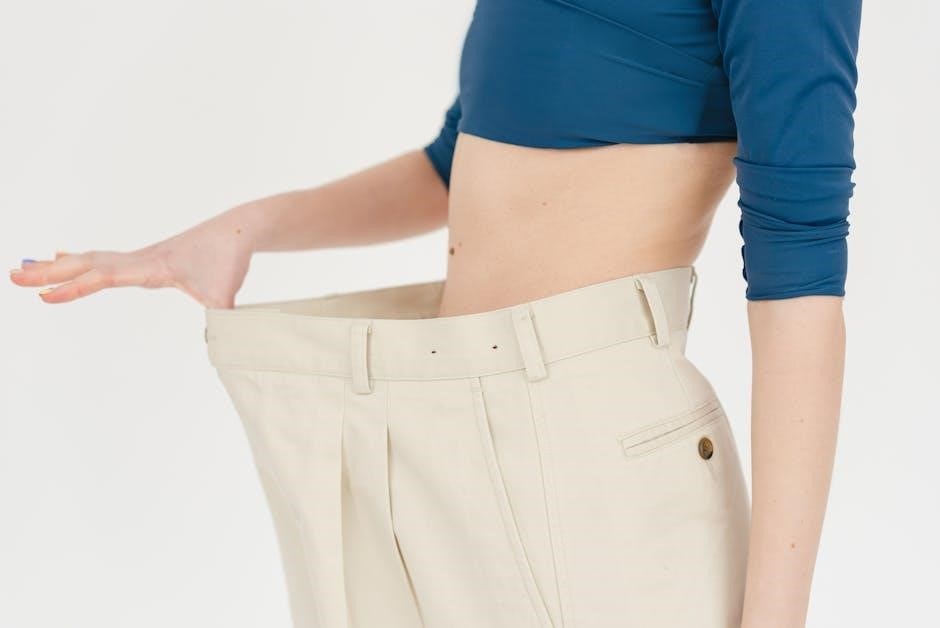
bras size guide
Bra sizing is a crucial aspect of ensuring comfort, support, and confidence for individuals. A well-fitting bra not only enhances appearance but also promotes better posture and reduces discomfort. Bra sizes are determined by two key measurements: the band size and the cup size. The band size refers to the measurement around the ribcage, just beneath the bust, while the cup size indicates the difference between the bust and band measurements.
Understanding bra sizing can be challenging due to variations in sizing standards across brands and regions. However, with the right tools and techniques, anyone can determine their accurate bra size. Measuring correctly involves using a flexible tape measure and following specific guidelines to ensure precision. Many experts recommend measuring regularly, as body changes can affect size over time.
Whether you’re shopping for everyday bras or specialized styles like sports bras, knowing your correct size is essential for optimal fit and comfort. This guide provides a step-by-step approach to measuring your bra size, helping you find the perfect fit tailored to your needs.

Why Correct Bra Size Matters
Wearing a bra with the correct size is essential for both comfort and health. Many individuals overlook the importance of proper bra sizing, but it plays a significant role in overall well-being. A bra that fits correctly provides the necessary support, prevents discomfort, and enhances confidence. Conversely, an ill-fitting bra can lead to a variety of issues, including poor posture, skin irritation, and even long-term damage to breast tissue and back muscles.
One of the most critical reasons to ensure a proper bra size is to maintain good health. A bra that is too tight can restrict breathing and cause discomfort, while one that is too loose may fail to provide adequate support, leading to strain on the shoulders and back. Over time, this strain can result in chronic back pain and poor posture. Additionally, a bra that fits poorly can cause friction and irritation, potentially leading to skin rashes or even infections. By wearing a bra that fits correctly, individuals can avoid these health-related issues and feel more comfortable throughout the day.

Another reason correct bra sizing matters is its impact on daily activities. Whether you’re engaging in exercise, running errands, or simply moving around, a well-fitting bra ensures that you can perform these tasks without hindrance. For example, during physical activity, a supportive bra can minimize breast movement, reducing discomfort and allowing for a full range of motion. This is especially important for individuals with larger busts, as excessive movement can lead to pain and long-term damage to the breast tissue and ligaments.
Moreover, wearing the correct bra size can significantly boost self-confidence. A bra that fits well creates a smooth silhouette under clothing, enhancing the appearance of outfits and making individuals feel more put-together. This confidence can translate into various aspects of life, from professional settings to social gatherings. Many people find that finding the right bra size empowers them to feel their best, both physically and emotionally.
It’s also important to recognize that bra sizing is not a one-time measurement. Bodies change over time due to factors such as weight fluctuations, hormonal shifts, and aging. These changes can affect bra size, making it essential to get remeasured periodically. Experts recommend measuring bra size every 6 to 12 months to ensure a consistent fit. Additionally, life events such as pregnancy, breastfeeding, or menopause can cause significant changes in bra size, further emphasizing the need for regular measurements.
Ultimately, the correct bra size is about more than just aesthetics; it’s about health, comfort, and confidence. By prioritizing proper fit, individuals can avoid potential health issues, enjoy greater comfort during daily activities, and feel more confident in their appearance. With the right tools and knowledge, anyone can determine their accurate bra size and experience the benefits of a well-fitting bra.

How to Prepare for Measuring Your Bra Size
Measuring your bra size accurately requires proper preparation to ensure the best fit. Taking the time to prepare will help you achieve precise measurements, which are essential for finding a comfortable and supportive bra. Below are the steps and tips to help you prepare effectively:
Gather the Necessary Tools
The first step in preparing to measure your bra size is to gather the tools you’ll need. These include:
- A soft, flexible measuring tape (preferably a fabric or plastic tape measure).
- A full-length mirror for visibility.
- A non-padded, well-fitting bra (optional but recommended for accurate band size measurement).
Avoid using a metal tape measure, as it may cause discomfort or inaccuracies. If you don’t have a soft measuring tape, you can purchase one at most clothing or craft stores.
Choose the Right Bra
Wear a non-padded, non-wire bra when measuring your bra size. This type of bra provides the most accurate representation of your natural shape and size. Avoid push-up bras, sports bras, or bras with heavy padding, as they can distort your measurements. If you don’t have a suitable bra, you can measure without one, but wearing a bra will help you achieve more precise results.
Stand in Front of a Mirror
Position yourself in front of a full-length mirror to ensure you can see how the measuring tape is positioned. This will help you maintain proper posture and ensure the tape measure is straight and level. Standing in front of a mirror also allows you to check if the bra is sitting correctly on your body.
Maintain Proper Posture
Good posture is essential for accurate measurements. Stand up straight with your shoulders relaxed and your feet parallel to each other. Slouching or leaning can cause the measuring tape to shift, leading to incorrect measurements. Ensure your bra sits level and is neither too tight nor too loose.
Prepare Your Body

Avoid measuring your bra size during times when your body may be temporarily swollen, such as during your menstrual cycle. Hormonal changes can cause slight fluctuations in your bust size, which may affect your measurements. Additionally, ensure your skin is dry and free of lotions or oils, as these can cause the tape measure to slip.
Familiarize Yourself with the Process
Before you begin measuring, take a moment to understand the process. Bra sizing involves two key measurements: the band size (the circumference of your ribcage just below your bust) and the cup size (the difference between your bust measurement and your band size). Knowing what to expect will help you feel more confident and prepared.
Ensure Privacy and Comfort
Find a quiet, private space where you can measure yourself without distractions or interruptions. Feeling comfortable and relaxed will make the process easier and more accurate. If you’re measuring in front of a mirror, ensure the room is well-lit so you can clearly see the tape measure.
Avoid Common Mistakes
Several common mistakes can affect the accuracy of your measurements. These include:
- Allowing the tape measure to sag or twist.
- Measuring over clothing that compresses or distorts your shape.
- Holding the tape measure too tightly or too loosely.
- Measuring at the wrong time of day (e.g., when your body is swollen).
By being mindful of these pitfalls, you can ensure your measurements are as accurate as possible.
Take Your Time
Measuring your bra size is not a rushed process. Take your time to ensure each step is done correctly. If you’re unsure about anything, consider enlisting the help of a friend or family member to assist with the measurements. Having someone else help can provide an additional perspective and improve accuracy.
Be Prepared to Remeasure
Keep in mind that your bra size may change over time due to factors such as weight fluctuations, hormonal changes, or aging. For this reason, it’s important to remeasure your bra size periodically (every 6 to 12 months) to ensure your bras continue to fit properly. Regular remeasuring is especially important during significant life events, such as pregnancy, breastfeeding, or menopause.
By following these preparation steps, you’ll be well-equipped to measure your bra size accurately and find a bra that offers the comfort, support, and confidence you deserve. Proper preparation is the foundation for achieving the best fit, so take the time to get it right!

Measuring Your Band Size
Measuring your band size is the first step in determining your bra size. The band size refers to the circumference of your ribcage, just below your bust. It is a critical measurement because it provides the foundation for your bra fit, offering the necessary support and stability. A correctly measured band size ensures that your bra sits comfortably and securely, preventing issues like digging, riding up, or lack of support. Below is a detailed guide on how to measure your band size accurately.
Understanding the Band Size
The band size is typically represented by a number, such as 32, 34, or 36, which corresponds to the inches or centimeters around your ribcage. In some regions, band sizes may be denoted by letters or other sizing systems, but the numerical system is the most common. The band size works in conjunction with the cup size to create your full bra size, such as 32A, 34B, or 36C.
Tools You’ll Need
To measure your band size, you’ll need a flexible tape measure. A soft, fabric, or plastic tape measure is ideal because it can conform to your body shape without causing discomfort. Avoid using a metal tape measure, as it may not provide accurate results. If you don’t have a tape measure, you can purchase one at most clothing or craft stores.

Preparing for Measurement
Before measuring your band size, ensure you’re wearing a non-padded, non-wire bra or no bra at all. A well-fitting, unpadded bra will provide the most accurate representation of your natural shape. If you choose to wear a bra, it should sit level and not be too tight or too loose. Stand in front of a full-length mirror to monitor your posture and the position of the tape measure.
Step-by-Step Guide to Measuring Your Band Size
Measuring your band size is a straightforward process when done correctly. Follow these steps to ensure accuracy:
Step 1: Position the Tape Measure
Wrap the tape measure around your ribcage, directly under your bust. The tape should be parallel to the floor and level all the way around your body. Ensure the tape measure is not twisted or bunched up, as this can lead to inaccurate measurements.
Step 2: Stand Up Straight
Maintain good posture while measuring. Stand tall with your shoulders relaxed and your feet parallel to each other. Slouching or leaning can cause the tape measure to shift, resulting in incorrect measurements.

Step 3: Adjust the Fit
The tape measure should be snug but not overly tight. It should feel comfortable against your skin, much like a well-fitting bra band. If the tape measure feels too loose, your band size may be too small, and if it feels too tight, your band size may be too large.
Step 4: Take the Measurement
Once the tape measure is properly positioned and adjusted, take note of the circumference in inches. If the measurement is an even number, that is your band size; If the measurement is an odd number, round down to the nearest even number. For example, if your ribcage measures 33 inches, your band size would be 32.
Step 5: Double-Check Your Measurement
To ensure accuracy, repeat the measurement a second time. If the results are consistent, you can be confident in your band size. If the measurements differ, try again, making sure the tape measure is level and snug.

Common Mistakes to Avoid
While measuring your band size is a relatively simple process, there are a few common mistakes to avoid:
- Measuring too tightly: A band size that is too tight can lead to discomfort and restricted breathing. Ensure the tape measure is snug but not constricting.
- Measuring too loosely: A band size that is too loose can result in a bra that lacks support and rides up throughout the day. The tape measure should feel secure but not overly tight.
- Measuring at the wrong position: The tape measure should be placed directly under your bust, not higher or lower. Measuring at the wrong position can lead to an inaccurate band size.
- Forgetting to round down for odd numbers: If your measurement is an odd number, always round down to the nearest even number to determine your band size.
Tips for Accurate Measurement
To ensure the most accurate results, consider the following tips:

- Measure at the end of the day: Your body naturally expands throughout the day, so measuring in the evening can provide a more accurate representation of your band size.
- Avoid measuring over bulky clothing: While a non-padded bra is acceptable, measuring over sweaters, sweatshirts, or other bulky clothing can distort your measurements.
- Ask for assistance: If you’re unsure about your measurements or find it difficult to position the tape measure correctly, consider asking a friend or family member to help.
- Measure regularly: Your band size can change over time due to weight fluctuations, hormonal changes, or other factors. For this reason, it’s important to remeasure your band size every 6 to 12 months.
Measuring your band size is a simple yet essential step in finding a well-fitting bra. By following the steps outlined above and avoiding common mistakes, you can determine your accurate band size and take the first step toward enjoying the comfort and support of a properly fitting bra. Remember, your band size is the foundation of your bra fit, so take the time to get it right. With accurate measurements, you’ll be better equipped to navigate the world of bra sizing and find styles that flatter your figure and meet your needs.